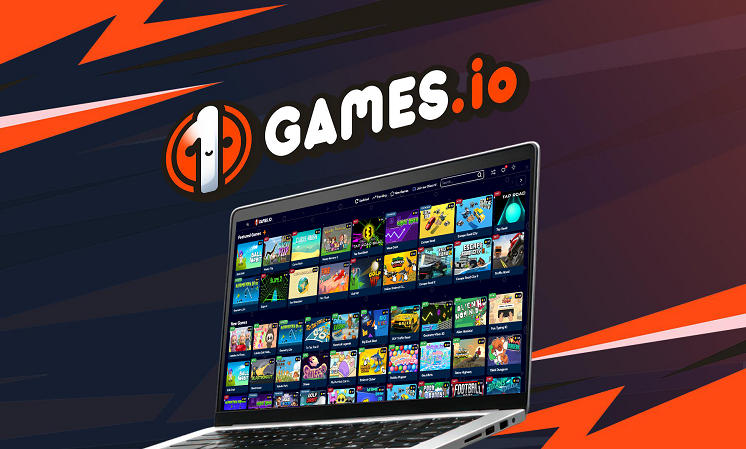Unblocked games represent a distinct category of browser-based entertainment that continues to exist in environments where digital access is intentionally limited. They are not defined by genre or developer but by their accessibility on networks designed to block recreational content. Over time, they have become an informal yet stable component of school and workplace internet use.
This article provides a detailed look at the characteristics, technical background, and social implications of unblocked games, offering a full picture of why they persist and how they function.
1. Definition and Core Characteristics
Unblocked games are lightweight online games that can be accessed on networks with restrictive filters. Their defining features include:
1.1 Browser-Based Format
These games run directly in a web browser without downloads or installations, making them suitable for environments where software installations are restricted.
1.2 Minimal System Requirements
Most unblocked games are designed to function on low-performance hardware such as school-issued Chromebooks or older computers.
1.3 High Accessibility
Because they are often hosted on multiple domains, they can remain available even when some URLs become restricted.
1.4 Short Play Sessions
They are typically structured in a way that allows for quick engagement, making them appropriate for brief breaks.
2. Historical Development
The trajectory of unblocked games can be traced through three major technological stages.
2.1 Flash Era
During the early 2000s, Adobe Flash served as the foundation for thousands of browser games. Many early unblocked games were simply Flash titles that happened to be hosted on sites not yet filtered by schools.
2.2 Transition Period
When Flash was discontinued in 2020, there was concern that many browser games would become inaccessible. However, developers and hobbyists began converting or recreating popular titles in HTML5, preserving the unblocked ecosystem.
2.3 Modern HTML5 and WebGL Era
Current unblocked games primarily use modern web technologies that load more quickly, run more efficiently, and are compatible with both desktop and mobile platforms.
3. Reasons for Popularity
The consistent popularity of unblocked games can be attributed to several practical and psychological factors.
3.1 Low Commitment
These games are designed to be played in short sessions, allowing users to stop at any moment without losing progress.
3.2 Stress Relief
In structured environments, brief gameplay can provide a small mental break that helps reduce stress or boredom.
3.3 Ease of Sharing
Students and coworkers can share links quickly and quietly, often creating small groups of players within the same environment.
3.4 Universal Availability
Because they operate in standard browsers, they are accessible to users regardless of differences in hardware or operating system.
4. How Unblocked Sites Operate
Unblocked game platforms remain functional because of certain hosting practices and strategies.
4.1 Distributed Hosting
Popular games are mirrored across numerous websites. If one site is blocked, another one usually remains available.
4.2 URL Variation
Site owners regularly shift domains, a strategy that often allows them to temporarily bypass institutional filters.
4.3 Minimalistic Structure
These sites usually avoid complex elements that could trigger filtering systems, instead relying on simple scripts and static files.
4.4 Rapid Replication
When a site goes down, another with similar content often appears within days, created by independent developers or enthusiasts.
5. Types of Games Commonly Found
While unblocked games include a wide range of genres, several categories appear consistently.
5.1 Platformers
Simple movement mechanics and short levels make platformers ideal for quick play sessions.
5.2 Physics-Based Games
These involve basic interactions such as balancing, launching objects, or manipulating gravity.
5.3 Endless Runners
With infinite levels and increasing difficulty, these games provide ongoing replay value.
5.4 Simple Sports Games
Two-player modes, often using shared keyboards, make these games popular in school settings.
5.5 Lightweight Shooters
Browser-friendly shooters with minimal graphics offer competitive play without heavy system demands.
6. Social Dynamics and Informal Networks
Unblocked games spread primarily through interpersonal communication, especially in settings where official channels discourage non-academic content.
6.1 Peer Sharing
Students often exchange working links, creating temporary micro-communities centered around specific games.
6.2 Classroom Culture
Certain games become trends within a single grade or school, often lasting until the associated site is blocked.
6.3 Workplace Microbreaks
In office environments, these games serve as a tool for brief mental resets during long work periods.
7. Ethical and Institutional Considerations
Unblocked games raise important questions about balancing digital freedom and appropriate use of restricted networks.
7.1 Academic Impact
While brief gameplay can reduce stress, excessive use during class time can disrupt learning.
7.2 Security Concerns
Some unblocked sites rely on ad-supported hosting, which may introduce questionable third-party elements.
7.3 Monitoring and Filtering Limitations
Even advanced filter systems can struggle to keep up with constantly changing domains, creating an ongoing challenge for administrators.
8. Long-Term Outlook
Unblocked games show no signs of disappearing. Their flexibility, simplicity, and adaptability allow them to survive even as filtering systems and web standards evolve.
8.1 Continued Migration to New Domains
As filters improve, hosting strategies will adapt, maintaining accessibility.
8.2 Expansion of HTML5 Capabilities
Improved browser performance will enable more sophisticated unblocked games in the future.
8.3 Persistence of Demand
As long as structured, restricted environments exist, users will look for small moments of entertainment, ensuring unblocked games remain relevant.
Conclusion
Unblocked games have become an enduring part of digital life in restricted environments. Their continued presence reflects not only technological adaptability but also the ongoing human desire for brief, accessible entertainment. While simple in form, they occupy a unique cultural space that blends practicality, creativity, and subtle rebellion.

